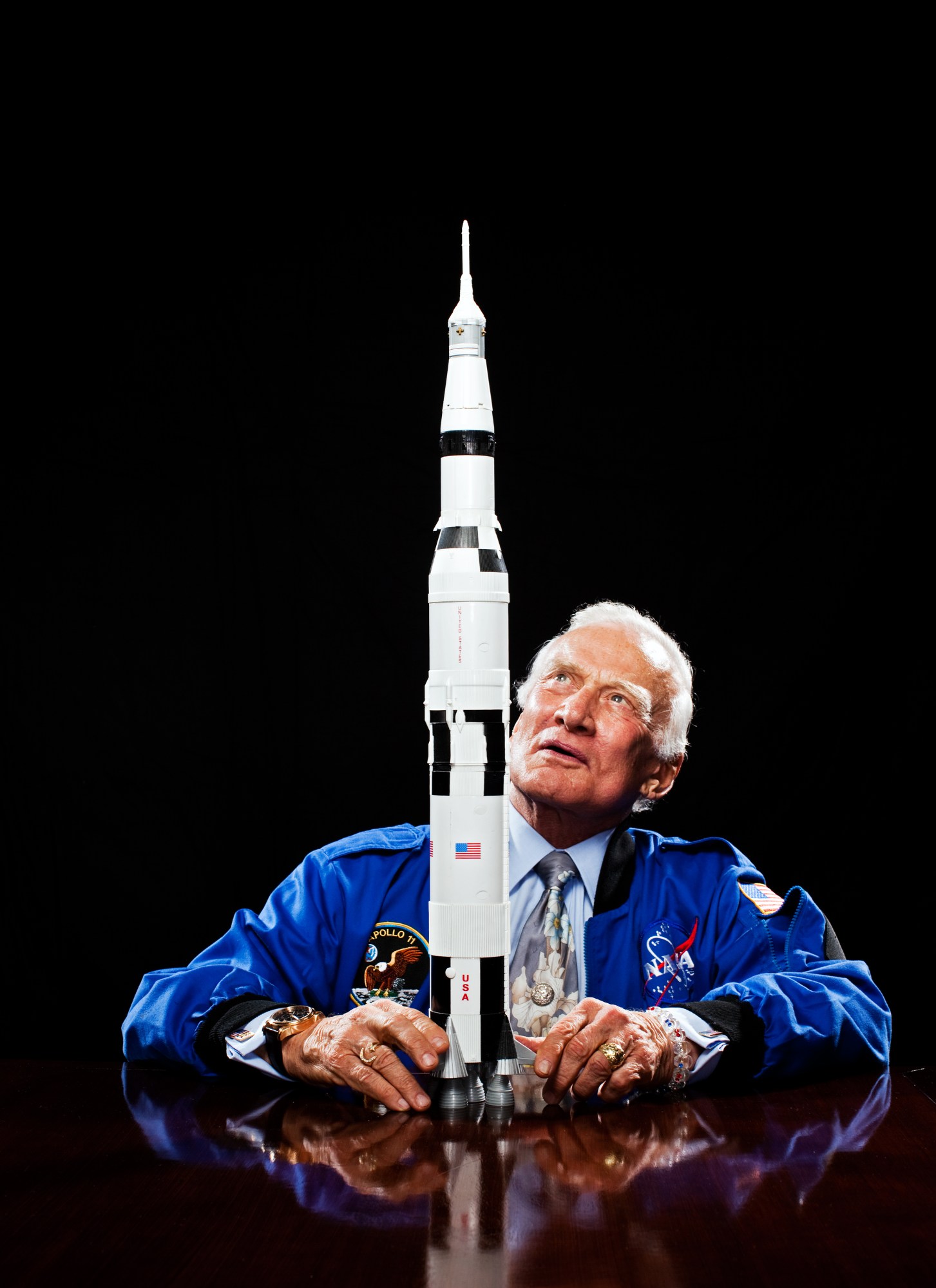Q&A: Buzz Aldrin
Apollo astronaut says: forget the moon, let’s colonize Mars.
In April, President Obama flew to Kennedy Space Center in Cape Canaveral, FL, to reveal details of his new strategy for NASA and the future of U.S. spaceflight. Sitting next to the president on Air Force One was Buzz Aldrin, who in July 1969 became the second man to walk on the moon. The seating arrangement was appropriate, since both men share a common goal for the nation’s space program: reaching Mars by the mid-2030s.
Like Obama, Aldrin opposes the strategy set by President Bush in 2004 to return humans to the lunar surface by 2020. The cornerstone of Bush’s plan for NASA was the Constellation program, which included building two new rockets–Ares I to ferry humans into orbit and Ares V to transport heavy cargo–and a manned exploration vehicle called Orion. But the program fell behind schedule and was over budget (see “The Future of Human Spaceflight,” January/February 2010). In January, Obama released a new budget proposal that increased NASA’s budget by $6 billion over the next five years but terminated the Constellation program.
Technology Review reporter Brittany Sauser recently asked Aldrin about his ideas for the future of U.S. human spaceflight.
This story is only available to subscribers.
Don’t settle for half the story.
Get paywall-free access to technology news for the here and now.
Subscribe now
Already a subscriber?
Sign in
TR: Why not go back to the moon?
Buzz Aldrin: We explored the moon 40 years ago, and now it should be developed by robots for scientific, commercial, and security reasons. Basically, I don’t see a financial return to justify the cost of sending U.S. humans and rockets back to the moon; it’s a waste of decades and hundreds of billions of dollars.
TR: What should NASA focus on instead?
BA: The objective should be a permanent presence on Mars by 2035. That’s 66 years after Neil Armstrong and I first landed on the moon, and our landing was 66 years after the Wright brothers’ first flight. Mars is clearly the best permanent-residence location other than Earth, and we can go there in case somebody or something blows up Earth. We will have a place that ensures the survival of the human race. That means humans who go there commit to staying–one-way tickets will be technically easier and less expensive and get us there sooner.
TR: But that will take years. What should NASA’s transition strategy be?
BA: Ares 1 and Ares V should be canceled, and in their place we [should] build an evolutionary shuttle-replacement launch system that could be called something like Ares III [and would transport both people and heavy cargo]. Orion should continue to be developed as an emergency vehicle for the space station, as the president stated. Meanwhile, I also very strongly suggest that instead of retiring the shuttles [in late 2010] and buying rides with the Russians for five, six, or seven years to get to our $100 billion space station, a highly undesirable situation, we stretch out the flights of the five remaining shuttle orbiters to 2015.
TR: The president’s plan also relies heavily on the commercial space industry to provide crew and cargo transportation to the space station. Do you think that’s a good idea?
BA: Yes, I do. Commercial vehicles will also help fill the gap, so we can develop new launch vehicles and spacecraft for landing on runways for the years beyond 2015 to bring us to the threshold of Mars.
TR: How will we get to Mars by 2035?
BA: We build the ultimate transportation system: a cycling spaceship called the Aldrin Cycler, which I first unveiled in 1985. It cycles between Earth and Mars. Spacecraft can hook up to it, and we could use it to fly by a comet as early as 2018. Then, in 2020, we could travel to a near-Earth object. We would need to build in-flight refueling and communication relays before and during this time, with more visits to asteroids.
In 2025, we land unmanned on Phobos [a moon of Mars] with some elements of habitation. We land people there in 2027 for a year and a half; in 2029 for a year and a half; and in 2031, we land three people who will not come back. In 2031, six people coming from Earth will join the three at Phobos and then continue on to become the first people to land on Mars by 2033 or 2035.
TR: But a consensus on Mars as the goal destination has not been reached. Have you spoken with other influential Apollo astronauts who oppose the termination of Constellation?
BA: I have long been open to discussions with other astronauts, especially the 24 astronauts, 18 of whom are still alive, who reached the moon. But that exclusive group does not have any coherent organization. I am forming a nebulous but much-needed concept for an organization that I call the Unified Strategic Space Enterprise. It would consist of highly respected people who would assist in the development of the national space policy.
TR: It seems like we’ve been arguing about the future of the U.S. space program for decades now.
BA: We really have only been debating the human spaceflight portions of exploration; where do we send U.S. humans? But there are robotics, the space station, technology developments like in-flight refueling, and all sorts of other things to think about.
